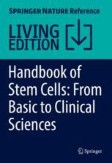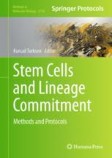Search
Search Results
-
Mechanisms of Cell Fusion in Cancer
Cell–cell fusion is a normal physiological mechanism that requires a well-orchestrated regulation of intracellular and extracellular factors....
-
Cell and Molecular Biology of Ovarian Cancer Updates, Insights and New Frontiers
The first of two companion books addressed the biology and clinical aspects of ovarian cancer. The companion title, Ovarian Cancer: Molecular &...

-
Cell Fusion and Syncytia Formation in Cancer
The natural phenomenon of cell–cell fusion does not only take place in physiological processes, such as placentation, myogenesis, or...
-
Stem Cell-Based Regenerative Medicine Therapy in Cancer
Stem cells play a unique role in various stages of an organism’s life cycle. Intensive research on the biology of stem cells has demystified many...
-
Modeling Cell Cycle Control and Cancer with pRB Tumor Suppressor
Cancer is a complex syndrome of diseases characterized by the increased abundance of cells that disrupts the normal tissue architecture within...
-
Stem Cell-Based Regenerative Medicine Therapy in Cancer
Stem cells play a unique role in various stages of an organism’s life cycle. Intensive research on the biology of stem cells has demystified many...
-
Identifying Cell Differentiation in Colorectal Cancer
The intestinal epithelium is a rapid self-renewing tissue. Stem cells at the bottom of the crypts first give rise to a proliferative progeny that...
-
The Impact of Mitochondria in Ovarian Cancer Cell Metabolism, Proliferation, and Metastasis
Mitochondrial dysfunctions are significantly implicated in cancer initiation, progression, and metastasis, which have been shown for several cancers...
-
An insight into the associations between microRNA expression and mitochondrial functions in cancer cell and cancer stem cell
The self-renew ability of cancer stem cells (CSCs) continues to challenge our determination for accomplishing cancer therapy breakthrough....

-
Using CRISPR/Cas9 to Edit a Thyroid Cancer Cell Line
Thyroid cancer is the most prevalent endocrine malignancy, comprising multiple types of cancer, with distinct clinical-pathological characteristics....
-
Tumorsphere Formation Assay: A Cancer Stem-Like Cell Characterization in Pediatric Brain Cancer Medulloblastoma
Cancer is a heterogeneous disease, comprising of a mixture of different cell populations. Cancer stem cells (CSCs), also known as tumor-initiating...
-
Detection of Gasdermin C-Mediated Cancer Cell Pyroptosis
Gasdermin proteins except DFNB59 are the executioners of pyroptotic cell death. Cleavage of a gasdermin by an active protease causes lytic cell...
-
Cancer
Cancer, the unrestricted growth of cell colonies in some tissues, is a disease that is not caused by pathogens. A reason for cancer is a disruption...
-
Establishment of a small-cell lung cancer (SCLC) mouse model using enhanced cancer stem-cell-functioning 3D SCLC spheroids
BackgroundDespite its low incidence rate, small-cell lung cancer (SCLC), which accounts for approximately 10%–15% of all lung cancers, is...

-
An Overview of Epigenetics Modifications in Normal and Cancer Cell
There is no need for all the approximate 20,000 genes of a human being to be active in every cell or all the time. Epigenetic regulation allows for...
-
Noninvasive Diagnosis of Cancer Based on the Heterogeneity and Fragmentation Features of Cell-Free Mitochondrial DNA
Circulating cell-free DNA (cfDNA) has been widely studied in liquid biopsy for cancer detection and monitoring. Studies have shown that the...
-
GMP-Compliant Mesenchymal Stem Cell-Derived Exosomes for Cell-Free Therapy in Cancer
Cancer is categorized as one of the life-threatening disease in the world, which has recently been associated with a significant increase in the...
-
Intrinsic signalling factors associated with cancer cell-cell fusion
Cellular fusion e.g. between cancer cells and normal cells represents a stepwise process that is tightly regulated. During a pre-hybrid preparation...

-
Signaling, cancer cell plasticity, and intratumor heterogeneity
Cancer’s complexity is in part due to the presence of intratumor heterogeneity and the dynamic nature of cancer cell plasticity, which create...

-
Epigallocatechin gallate inhibits ovarian cancer cell growth and induces cell apoptosis via activation of FOXO3A
Epigallocatechin gallate (EGCG), a bioactive component in tea, displays broad anti-cancer effects. Our study was designed to evaluate the anti-cancer...

